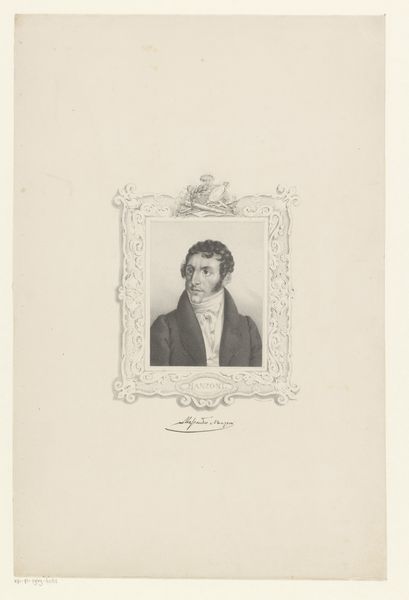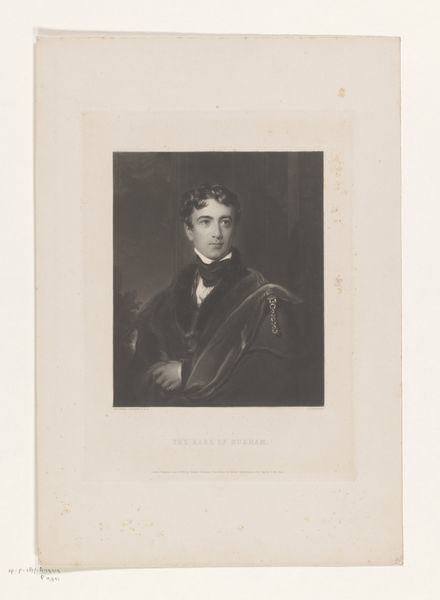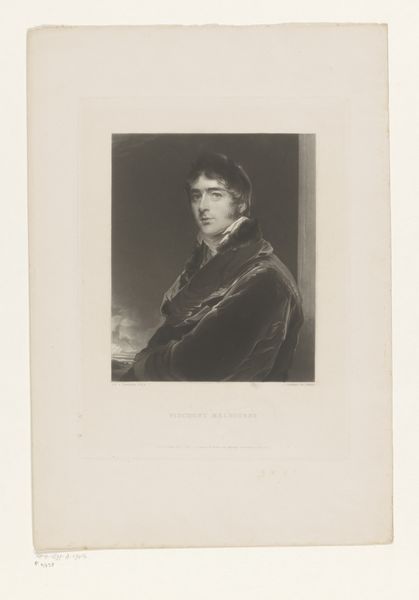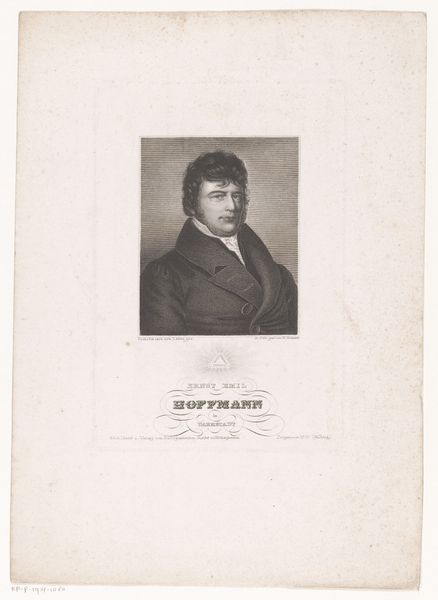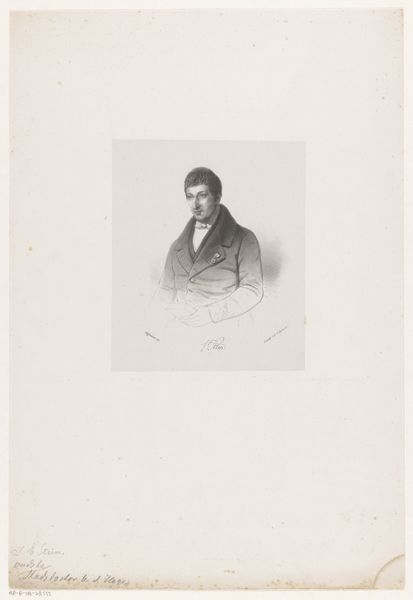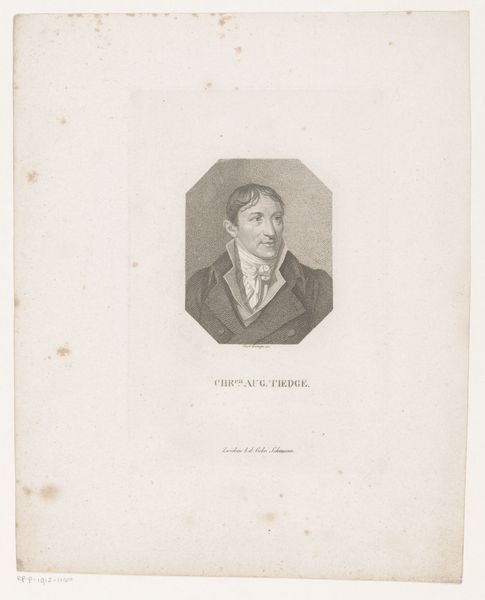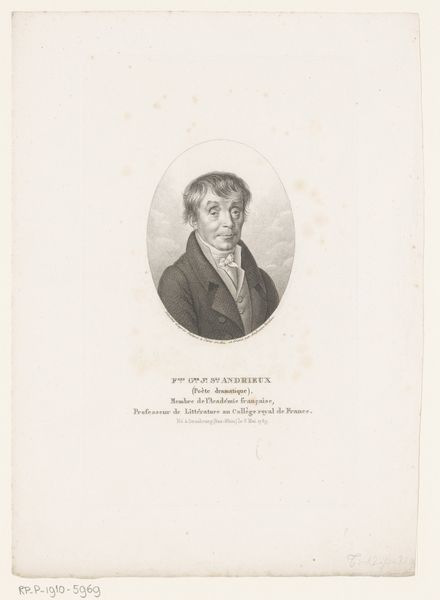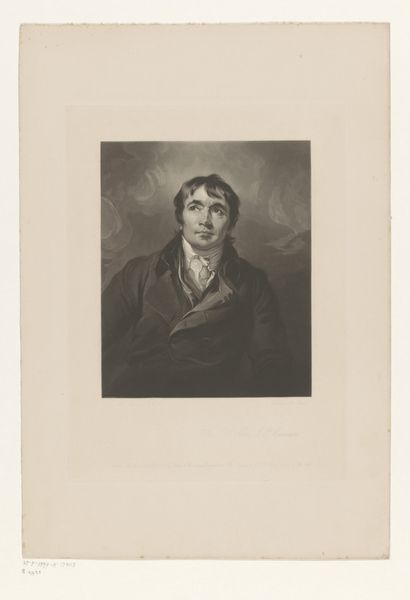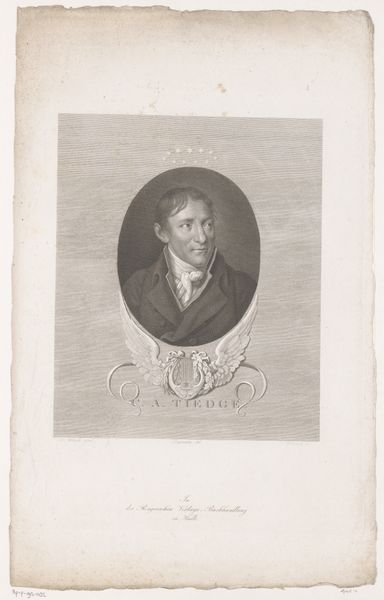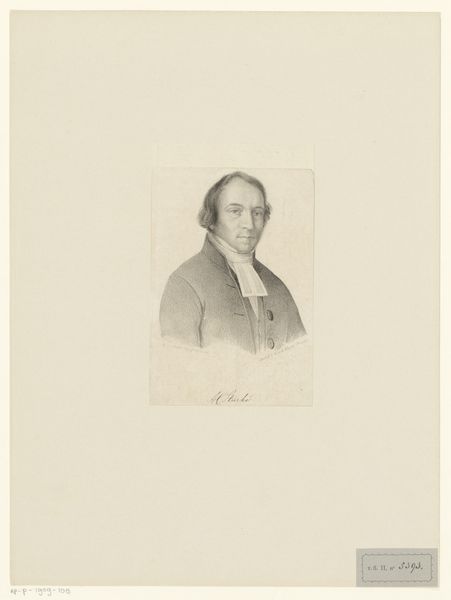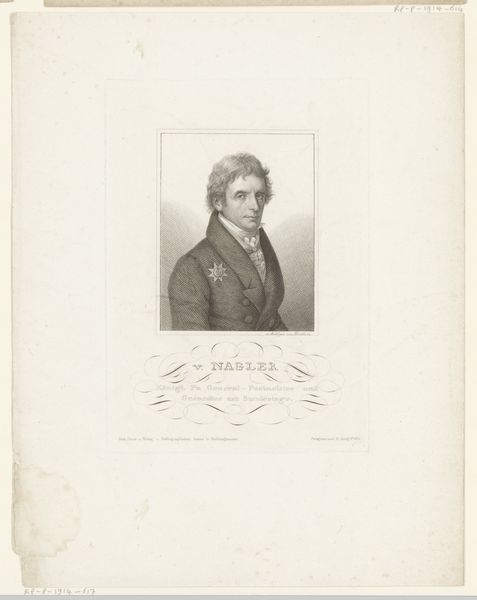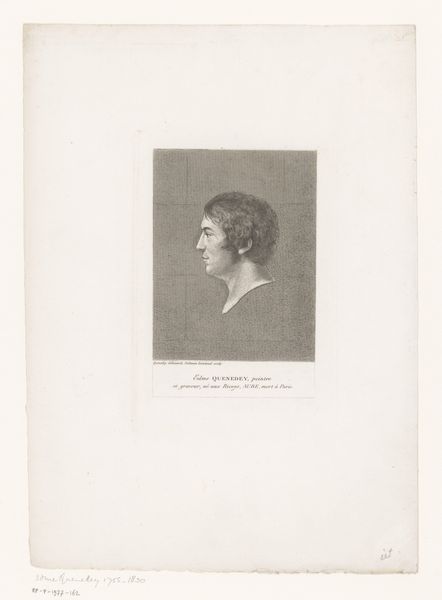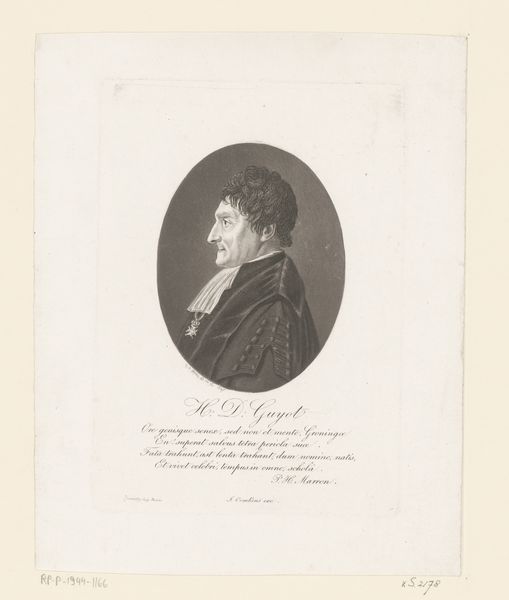
print, engraving
#
portrait
# print
#
romanticism
#
history-painting
#
engraving
Dimensions: height 185 mm, width 127 mm
Copyright: Rijks Museum: Open Domain
Curator: Here we have a print, "Portret van William Lamb, 2nd Viscount Melbourne," made sometime between 1834 and 1840. It's attributed to Carl Mayer and the artwork is currently held at the Rijksmuseum. Editor: It's immediately striking—a bit melancholy, isn't it? All that enveloping dark fabric framing the face makes you wonder what he's trying to hide, or maybe what the artist wanted us to think he was concealing. Curator: Considering it's an engraving, that effect is rather cleverly achieved. Think about the laborious process of carving those fine lines, reversing the image, applying ink, pressing it… It really brings home how printmaking allowed for the dissemination of images of powerful figures. This romantic depiction certainly flatters Lord Melbourne. Editor: Absolutely. And the flourish of script beneath the image – "Lord Melbourne, Konigl. Grossbritannischer Premier-Minister" – anchors it in a specific historical context, a snapshot of power and persona carefully constructed through the very medium. Were engravings the equivalent of early political posters do you think? Curator: In a way, yes. There's something incredibly intimate, yet distant, about encountering someone like this through an engraving. I'm always fascinated by the performative aspect of portraiture—the dance between subject and artist in shaping public image. In Melbourne's case, Prime Minister at a turbulent time, the need to project authority was vital. Editor: Though, look at those soft, almost blurred edges. It subverts the harshness often associated with power. The engraving technique itself contributes to the sense of layered meaning. How many hands worked on this, from the initial sketch to the final print run? Each contributing their labor. Curator: Precisely. Each individual leaves some mark, literally and metaphorically. This is so very much of the Romantic Era, it evokes a historical distance that emphasizes a controlled expression of sensitivity that captures the likeness but obscures all the rest. Editor: Exactly. It makes me consider not just who Melbourne was, but how the Industrial Revolution impacted these artistic endeavors; that contrast of progress versus artistry. Curator: Food for thought. It adds to the layers within this artwork.
Comments
No comments
Be the first to comment and join the conversation on the ultimate creative platform.
